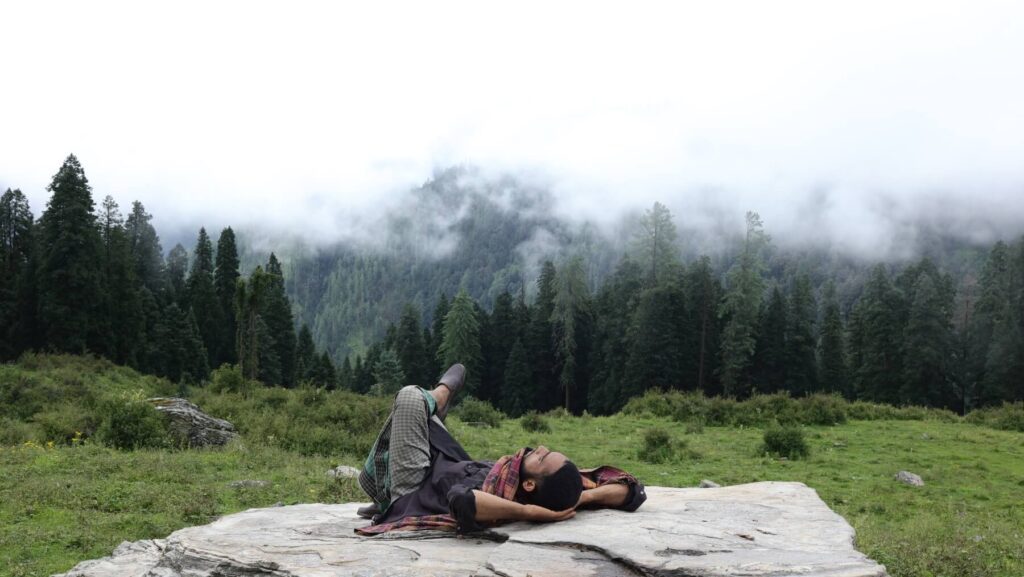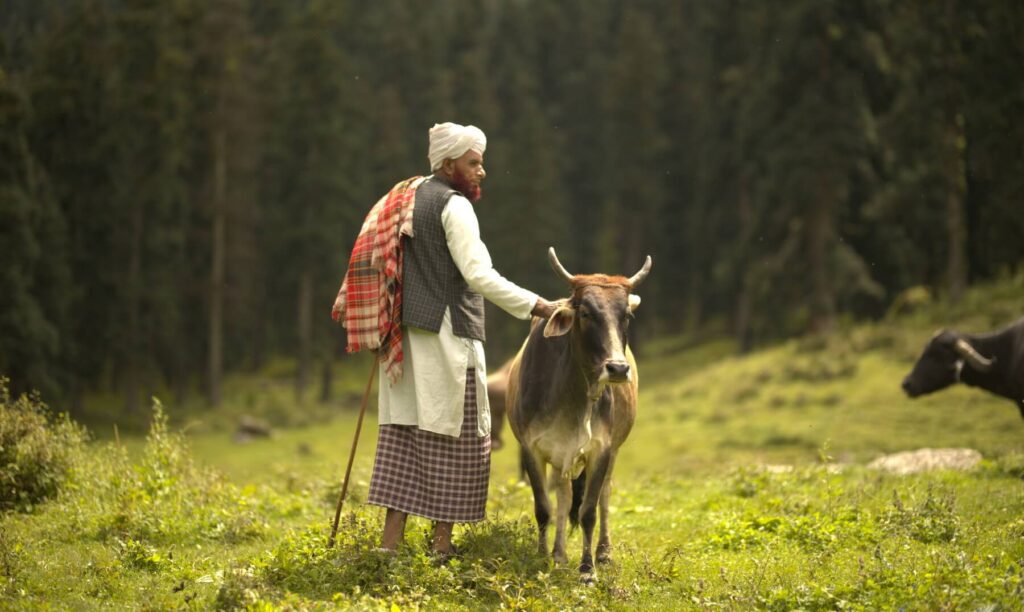The Nomad’s Land Van Gujjars
Shifting Horizons: Transhumance in the Digital Age
A young man has climbed to the very top of a tree, balanced on its gnarled boughs with the grace of a champion pole vaulter. Perched on this makeshift precipice under the Himalayan sky, he is both man and metaphor – a poetic expression of the Van Gujjar way of life.
But who is a Van Gujjar? Ask Isa, and he will chuckle in mild amusement. Well, Allah made them all. But what makes a Van Gujjar a Van Gujjar is his nomadic way of life. Winter in the plains, summer in the hills. No permanent residence, no land, no property. Forever on the move.
That is the Van Gujjar’s identity. His destiny.
It is a tradition of transhumance that has survived for hundreds of years, maintaining a delicate balance between man, animal and nature.

They take only as much as they need to survive, underscores Firoz, his fiery red beard lit by the golden glow of a woodfire stove. The vast forest is rich with herbs and trees – all lucrative trades, no doubt. But the Van Gujjars, who are of the forest and for the forest, see it as their duty to protect it; to nourish the greenscape rather than plunder it.
Such is their reverence for the creatures of the forest that they abstain from meat altogether, a surprising departure from Islamic food culture. But then, they are no ordinary Muslims either, as Firoz will tell you.
There are enough legends – and songs – to go round crackling fires. A king mesmerised by a Gujjar milkmaid’s beauty. The lovestruck man descending from his royal elephant to seek out this mysterious damsel. A proposal with a condition: the king would have to adopt her religion.
And so, around the time of Mughal Emperor Aurangzeb, the Van Gujjars became Muslim.

But the time of kings and queens is past. In their place is a watchful state, a government that has enacted forest protection laws to prevent unchecked exploitation of its green cover. The Van Gujjars now have to seek permits to migrate. Isa’s family has recently been denied permission.
There is, however, more than tradition at stake. As Firoz explains, the grazing plants of the plains begin to grow in the summer, flourishing in the monsoon. The Van Gujjars move into the Himalayan bugyals or the higher meadows during this time, allowing the forest to replenish itself.
In the time of widespread deforestation and a looming climate crisis, the Van Gujjars embody a unique language of coexistence. It is a balance that may be temporarily threatened by the spectre of bureaucracy, but finds expression in the rippling grasslands and babbling brooks of the forest, of which they form an integral part.
